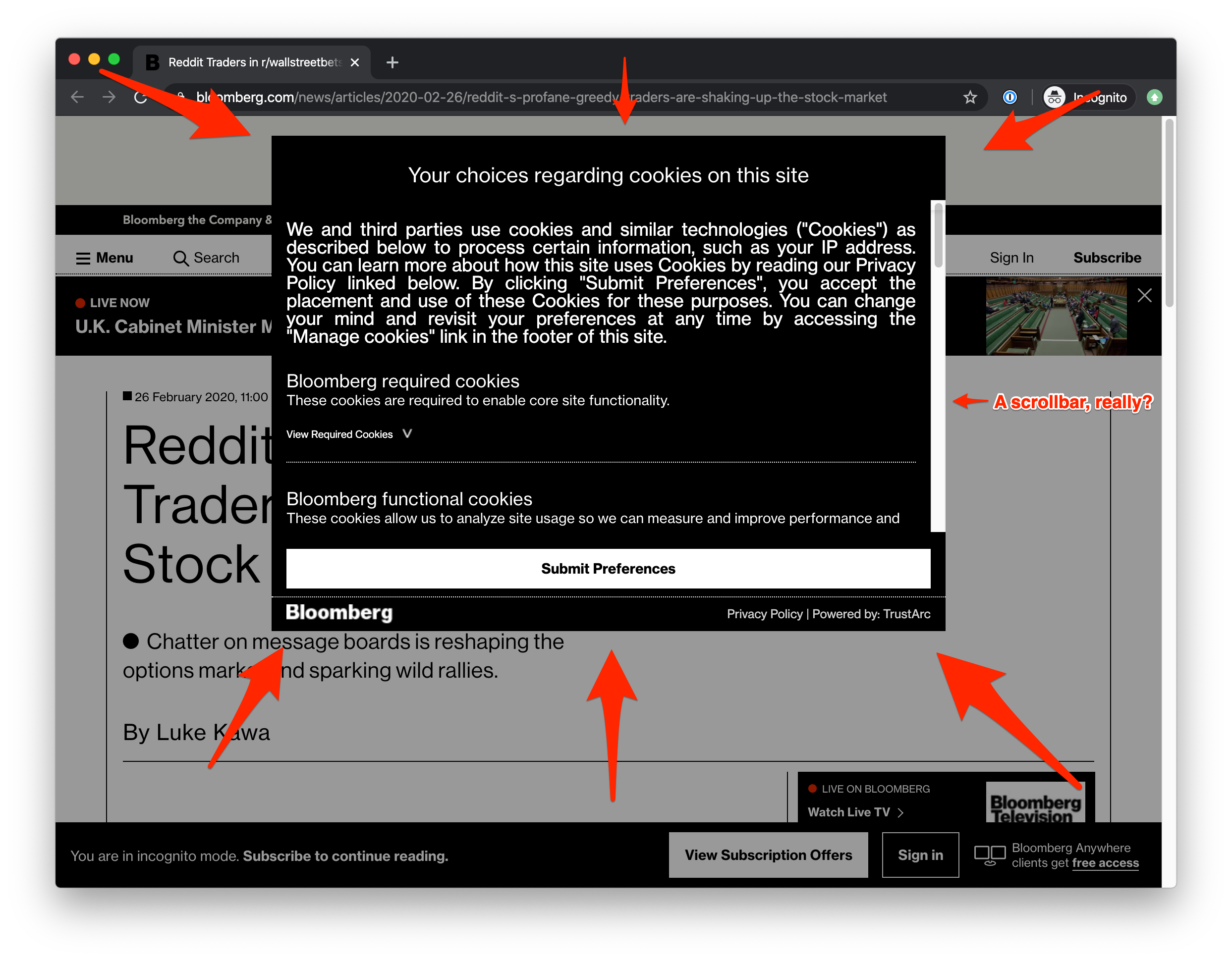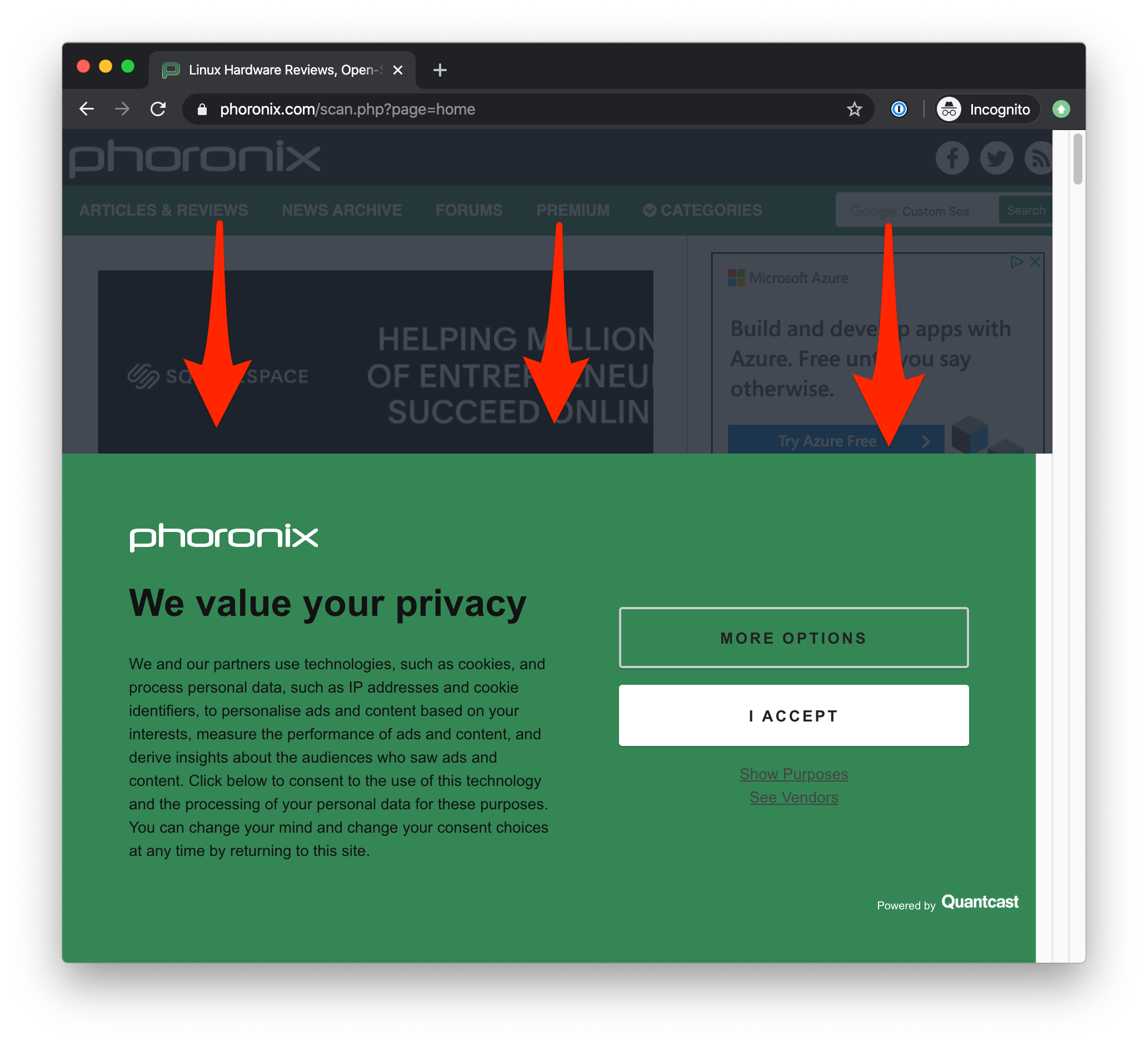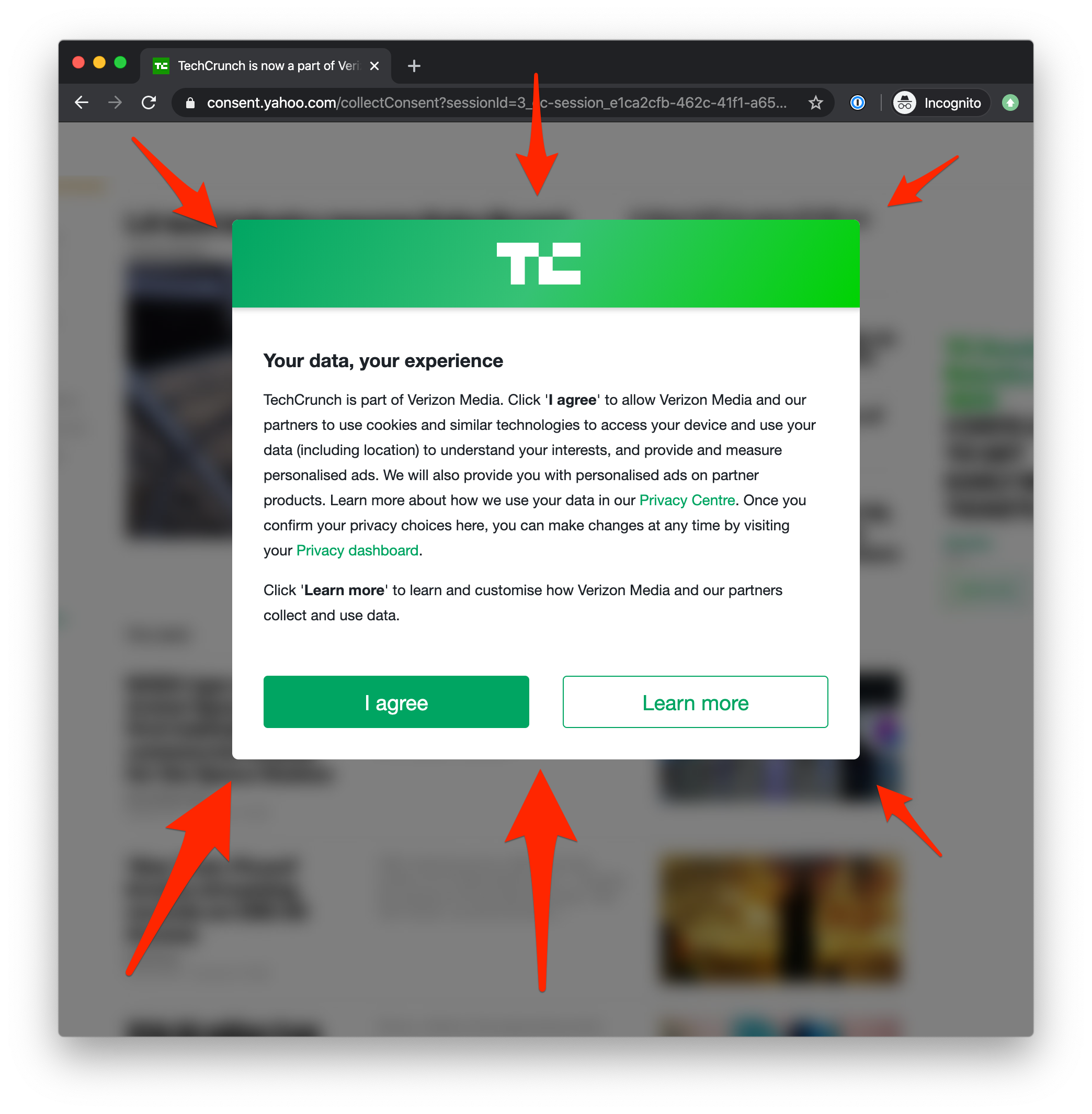Have you noticed how this page doesn’t have a cookie pop-up? Nothing to accept before you can read the content?
It’s because I figured it out. I’ve spent months studying the General Data Protection Regulation (“GDPR”) and the Cookie Law and found a way to avoid having to ask you for any kind of permissions.
But Mattias, I forgot what the cookie banners look like! 😱
They’ve become rare, haven’t they? I mean I literally had to open at least two random websites to find a cookie notice!
Just in case you forgot, I went to the trouble of taking actual screenshots and annotating them. With arrows. At least you’ll be able to find those cookie notices now (unlike Waldo, who’s always hiding)!
Take this one for example. When you’re on mobile, it takes up half your screen.

What’s better than half your screen? Full screen cookie notices of course! And because of lawyer-y stuff, we need a full disclaimer and just add a scrollbar in the notice too. I mean, it’s already fucked, isn’t it?

But what if we position it at the very bottom. Like something subtle? Something hidden from view?
Nope.

OK, if we can’t hide it, let’s just stick with the in-your-face cookie notice. Full screen, we’ll even redirect you away from the main site to show it to you. 👌

So those are the cookie banners. You remember them now, don’t you?
The rule I can circumvent 🥳
See, there are a lot of small prints in the GDPR text. It’s 11 chapters with 99 articles, after all. And the Cookie Law has even more text. Nobody has time to read it all!
But the real trick is in this one, hidden, line. I’ll paraphrase, because the actual line is boring,lawyer-corporate-enterprise, speak.
In no fewer words, GDPR & the Cookie Law states:
Stop. Fucking. Tracking. Everyone. On. The. Internet.
Now this isn’t entirely true, I should admit. If I were to use a few more words, the summary of GDPR would be:
Stop. Collecting. Everyone’s. Personal. Browsing. Data. On. Every. Website.
As a small aside: yes, I am available for hire as a copywriter.
Now that we briefly summarized the policy, what’s the loophole?
The loophole 🚀
Turns out to be quite simple really.
Want to know why I don’t have a cookie notice on this site? It’s because I don’t track you.
I don’t track your browser habits, I don’t collect your screen resolutions or fingerprint you in any way. In fact, I couldn’t care less who you are or why you’re reading this.
There’s no Google Analytics tracking, no Google Ads or Double Click advertising. There’s no hidden Facebook or Twitter pixel.
And guess what? The site still works. We don’t need any of that!
I run my weekly e-mail newsletter in the exact same way. No tracking pixels, no open-tracking. Pure e-mail.
Want to know if your blogposts are well-received? Ask for feedback on Twitter. Or on Facebook. You know what the difference is with that approach? It’s opt-in by design.
The loophole is pretty simple: don’t collect personal data and give it to 3rd parties. 😉
Why does no one know of this trick? 🔥
You’d think it’s pretty easy to implement this trick, wouldn’t you? I took me just a few minutes to remove all tracking code (which I did months ago).
But by looking at the major sites you can tell, it’s not a known loophole. It’s something very few people seem to be aware of. So I just had to share it.
Now please, implement this new approach and give me back 1/3rd of my screen real estate when I visit your website. 😘